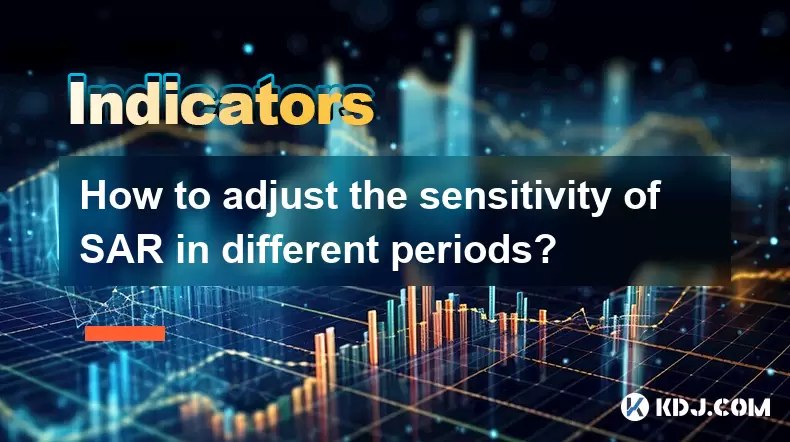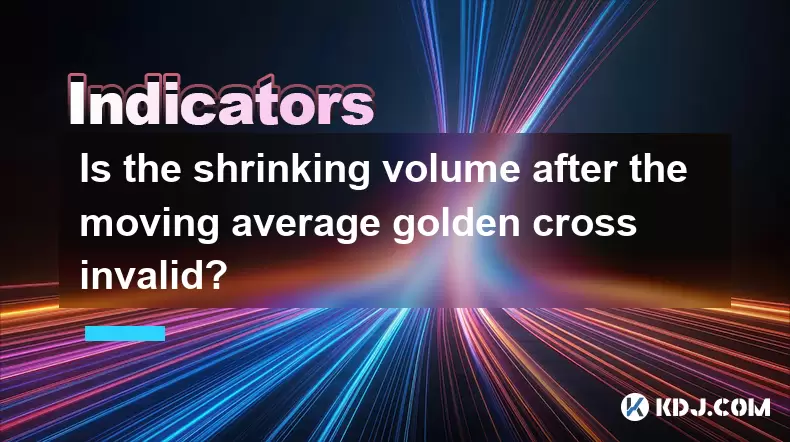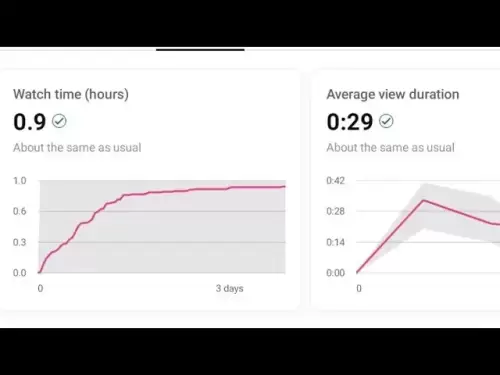-
 Bitcoin
Bitcoin $103,456.1111
0.49% -
 Ethereum
Ethereum $2,414.9631
0.02% -
 Tether USDt
Tether USDt $1.0006
0.05% -
 XRP
XRP $2.1083
0.24% -
 BNB
BNB $634.8760
-0.76% -
 Solana
Solana $139.8437
1.94% -
 USDC
USDC $0.9998
-0.01% -
 TRON
TRON $0.2737
0.97% -
 Dogecoin
Dogecoin $0.1602
0.20% -
 Cardano
Cardano $0.5737
1.08% -
 Hyperliquid
Hyperliquid $32.9779
-2.54% -
 Bitcoin Cash
Bitcoin Cash $474.8886
-1.80% -
 Sui
Sui $2.6272
-1.99% -
 Chainlink
Chainlink $12.4878
0.14% -
 UNUS SED LEO
UNUS SED LEO $8.9234
0.35% -
 Stellar
Stellar $0.2411
-0.18% -
 Avalanche
Avalanche $17.0274
-0.70% -
 Toncoin
Toncoin $2.8936
-1.11% -
 Shiba Inu
Shiba Inu $0.0...01112
-0.58% -
 Litecoin
Litecoin $82.6982
1.33% -
 Hedera
Hedera $0.1423
-0.05% -
 Monero
Monero $314.8455
3.26% -
 Ethena USDe
Ethena USDe $1.0006
0.01% -
 Polkadot
Polkadot $3.4043
1.14% -
 Dai
Dai $0.9999
0.01% -
 Bitget Token
Bitget Token $4.2848
-0.13% -
 Uniswap
Uniswap $6.8748
-5.45% -
 Pepe
Pepe $0.0...09661
0.52% -
 Pi
Pi $0.5359
1.19% -
 Aave
Aave $242.9168
-1.03%
How to adjust the sensitivity of SAR in different periods?
Adjust SAR sensitivity for crypto trading: increase AF for short-term, use default for medium-term, and decrease for long-term trends to optimize strategy.
May 27, 2025 at 08:43 pm

The Parabolic Stop and Reverse (SAR) indicator is a popular tool among cryptocurrency traders for determining potential reversals in price trends. Adjusting the sensitivity of the SAR across different periods can significantly impact its effectiveness in your trading strategy. In this article, we will explore how to fine-tune the SAR's sensitivity for various time frames, ensuring you can make the most out of this powerful indicator.
Understanding the Basics of SAR
Before diving into adjusting the sensitivity, it's crucial to understand how the SAR works. The Parabolic SAR is designed to provide entry and exit points in a trending market. It appears on a chart as a series of dots, either above or below the price, depending on the current trend. When the dots are below the price, it suggests an uptrend, and when they are above, it indicates a downtrend. The formula for calculating SAR involves acceleration factors, which dictate how quickly the SAR moves towards the price.
Factors Affecting SAR Sensitivity
The sensitivity of the SAR is primarily controlled by two parameters: the acceleration factor (AF) and the maximum acceleration factor (Max AF). The acceleration factor starts at a small value, typically 0.02, and increases by a step (usually 0.02) each time the price reaches a new high or low. The maximum acceleration factor limits how high the AF can go, commonly set at 0.20. Adjusting these values will change how quickly the SAR reacts to price changes, thereby altering its sensitivity.
Adjusting SAR Sensitivity for Short-Term Periods
For short-term trading, such as using 1-minute or 5-minute charts, you might want the SAR to be more sensitive to capture quick price movements. To achieve this, increase the starting acceleration factor and the maximum acceleration factor. For instance, you could set the starting AF to 0.03 and the Max AF to 0.25. This configuration will make the SAR dots move closer to the price more quickly, allowing you to enter and exit trades faster.
- Open your trading platform and navigate to the indicator settings.
- Select the Parabolic SAR indicator.
- Adjust the starting acceleration factor to 0.03.
- Set the maximum acceleration factor to 0.25.
- Apply the changes and observe how the SAR behaves on your short-term chart.
Adjusting SAR Sensitivity for Medium-Term Periods
For medium-term trading, such as 1-hour or 4-hour charts, a balance between sensitivity and reliability is crucial. You may want to use the default settings or slightly adjust them to suit your strategy. A common setting for medium-term charts is a starting AF of 0.02 and a Max AF of 0.20. This setup allows the SAR to follow the trend without being overly sensitive to minor price fluctuations.
- Access the indicator settings on your trading platform.
- Choose the Parabolic SAR indicator.
- Ensure the starting acceleration factor is set to 0.02.
- Confirm the maximum acceleration factor is at 0.20.
- Apply these settings and monitor the SAR's performance on your medium-term chart.
Adjusting SAR Sensitivity for Long-Term Periods
In long-term trading, such as daily or weekly charts, the focus is on capturing significant trends rather than short-term fluctuations. To achieve this, you should decrease the sensitivity of the SAR by lowering the acceleration factors. A starting AF of 0.01 and a Max AF of 0.15 can be effective for long-term charts. This configuration will make the SAR less reactive to price movements, ensuring it stays in a trend for longer periods.
- Go to the indicator settings in your trading platform.
- Select the Parabolic SAR indicator.
- Set the starting acceleration factor to 0.01.
- Adjust the maximum acceleration factor to 0.15.
- Apply the changes and review the SAR's behavior on your long-term chart.
Customizing SAR Sensitivity for Specific Cryptocurrencies
Different cryptocurrencies may exhibit unique price behaviors, requiring further customization of the SAR's sensitivity. For highly volatile assets like Bitcoin, you might need to adjust the acceleration factors to better suit the asset's volatility. Conversely, for more stable cryptocurrencies, you might prefer a less sensitive SAR to avoid false signals.
- Analyze the historical volatility of the cryptocurrency you are trading.
- Adjust the starting and maximum acceleration factors based on the asset's volatility.
- Test different settings on historical data to find the optimal configuration.
- Apply the chosen settings to your live trading charts and monitor performance.
Practical Tips for Using Adjusted SAR
When using an adjusted SAR, it's essential to combine it with other indicators to confirm signals. Consider using moving averages or the Relative Strength Index (RSI) to validate SAR signals. Additionally, always backtest your adjusted SAR settings on historical data to ensure they align with your trading strategy and risk tolerance.
- Add a moving average to your chart to confirm the trend direction.
- Use the RSI to identify overbought or oversold conditions that might affect the SAR's signals.
- Backtest your adjusted SAR settings on past data to evaluate their effectiveness.
- Continuously monitor and refine your settings based on real-time market conditions.
Frequently Asked Questions
Q: Can the SAR be used effectively in a sideways market?
A: The SAR is primarily designed for trending markets and can produce many false signals in a sideways market. To mitigate this, you can use other indicators like the Average Directional Index (ADX) to determine if the market is trending before relying on the SAR.
Q: How often should I adjust the SAR settings?
A: The frequency of adjusting SAR settings depends on your trading strategy and the market conditions. For most traders, reviewing and adjusting settings monthly or quarterly is sufficient, but more active traders might need to tweak them more frequently based on market volatility.
Q: Is it possible to automate the adjustment of SAR sensitivity?
A: Yes, many trading platforms allow for the automation of indicator settings through custom scripts or algorithms. You can program these scripts to adjust the SAR's sensitivity based on predefined market conditions or time frames.
Q: What are the risks of using a highly sensitive SAR?
A: A highly sensitive SAR can lead to more frequent trading signals, which may result in increased transaction costs and potential whipsaws. It's crucial to balance sensitivity with the overall stability of your trading strategy to avoid excessive trading and potential losses.
Disclaimer:info@kdj.com
The information provided is not trading advice. kdj.com does not assume any responsibility for any investments made based on the information provided in this article. Cryptocurrencies are highly volatile and it is highly recommended that you invest with caution after thorough research!
If you believe that the content used on this website infringes your copyright, please contact us immediately (info@kdj.com) and we will delete it promptly.
- Inherited Riches: Rare Coin Collection Valued at £6,000 – Is Your Change Worth a Fortune?
- 2025-06-22 12:25:12
- Fiat-Backed Stablecoins, Tokenized Treasuries, and DeFi: A New York Minute on the Future of Finance
- 2025-06-22 12:25:12
- BlockDAG, Tron, and Toncoin: Navigating the Crypto Landscape in 2025
- 2025-06-22 12:35:12
- Navigating the Wild West: Rug Pulls, Meme Coins, and Market Scams in Crypto
- 2025-06-22 12:35:12
- Ruvi AI: The Audited Token Poised to Outshine Shiba Inu
- 2025-06-22 10:25:12
- Dypians, DeFi, and Sei Network: A Deep Dive into the Latest Trends
- 2025-06-22 10:25:12
Related knowledge

Does the second surge in the RSI overbought zone induce more?
Jun 22,2025 at 08:35am
Understanding the RSI Overbought ZoneThe Relative Strength Index (RSI) is a momentum oscillator commonly used in technical analysis to measure the speed and change of price movements. It ranges from 0 to 100, with values above 70 typically considered overbought and values below 30 considered oversold. When the RSI enters the overbought zone for the firs...

Does the sudden contraction of ATR indicate the end of the trend?
Jun 20,2025 at 11:14pm
Understanding ATR and Its Role in Technical AnalysisThe Average True Range (ATR) is a technical indicator used to measure market volatility. Developed by J. Welles Wilder, ATR calculates the average range of price movement over a specified period, typically 14 periods. It does not indicate direction—only volatility. Traders use ATR to gauge how much an ...

Is it invalid if the DMI crosses but the ADX does not expand?
Jun 21,2025 at 09:35am
Understanding the DMI and ADX RelationshipIn technical analysis, the Directional Movement Index (DMI) consists of two lines: +DI (Positive Directional Indicator) and -DI (Negative Directional Indicator). These indicators are used to determine the direction of a trend. When +DI crosses above -DI, it is often interpreted as a bullish signal, while the opp...

How to filter false signals when the SAR indicator frequently flips?
Jun 21,2025 at 08:43pm
Understanding the SAR Indicator and Its BehaviorThe SAR (Stop and Reverse) indicator is a popular technical analysis tool used in cryptocurrency trading to identify potential reversals in price movement. It appears as a series of dots placed either above or below the price chart, signaling bullish or bearish trends. When the dots are below the price, it...

Is the trend continuation when the Williams indicator is oversold but there is no rebound?
Jun 20,2025 at 11:42pm
Understanding the Williams %R IndicatorThe Williams %R indicator, also known as the Williams Percent Range, is a momentum oscillator used in technical analysis to identify overbought and oversold levels in price movements. It typically ranges from 0 to -100, where values above -20 are considered overbought and values below -80 are considered oversold. T...

Is the shrinking volume after the moving average golden cross invalid?
Jun 22,2025 at 10:42am
Understanding the Moving Average Golden Cross in CryptocurrencyIn the world of cryptocurrency trading, technical indicators play a crucial role in decision-making. One such indicator is the moving average golden cross, which occurs when a short-term moving average crosses above a long-term moving average, typically signaling a bullish trend. This event ...

Does the second surge in the RSI overbought zone induce more?
Jun 22,2025 at 08:35am
Understanding the RSI Overbought ZoneThe Relative Strength Index (RSI) is a momentum oscillator commonly used in technical analysis to measure the speed and change of price movements. It ranges from 0 to 100, with values above 70 typically considered overbought and values below 30 considered oversold. When the RSI enters the overbought zone for the firs...

Does the sudden contraction of ATR indicate the end of the trend?
Jun 20,2025 at 11:14pm
Understanding ATR and Its Role in Technical AnalysisThe Average True Range (ATR) is a technical indicator used to measure market volatility. Developed by J. Welles Wilder, ATR calculates the average range of price movement over a specified period, typically 14 periods. It does not indicate direction—only volatility. Traders use ATR to gauge how much an ...

Is it invalid if the DMI crosses but the ADX does not expand?
Jun 21,2025 at 09:35am
Understanding the DMI and ADX RelationshipIn technical analysis, the Directional Movement Index (DMI) consists of two lines: +DI (Positive Directional Indicator) and -DI (Negative Directional Indicator). These indicators are used to determine the direction of a trend. When +DI crosses above -DI, it is often interpreted as a bullish signal, while the opp...

How to filter false signals when the SAR indicator frequently flips?
Jun 21,2025 at 08:43pm
Understanding the SAR Indicator and Its BehaviorThe SAR (Stop and Reverse) indicator is a popular technical analysis tool used in cryptocurrency trading to identify potential reversals in price movement. It appears as a series of dots placed either above or below the price chart, signaling bullish or bearish trends. When the dots are below the price, it...

Is the trend continuation when the Williams indicator is oversold but there is no rebound?
Jun 20,2025 at 11:42pm
Understanding the Williams %R IndicatorThe Williams %R indicator, also known as the Williams Percent Range, is a momentum oscillator used in technical analysis to identify overbought and oversold levels in price movements. It typically ranges from 0 to -100, where values above -20 are considered overbought and values below -80 are considered oversold. T...

Is the shrinking volume after the moving average golden cross invalid?
Jun 22,2025 at 10:42am
Understanding the Moving Average Golden Cross in CryptocurrencyIn the world of cryptocurrency trading, technical indicators play a crucial role in decision-making. One such indicator is the moving average golden cross, which occurs when a short-term moving average crosses above a long-term moving average, typically signaling a bullish trend. This event ...
See all articles
























































































